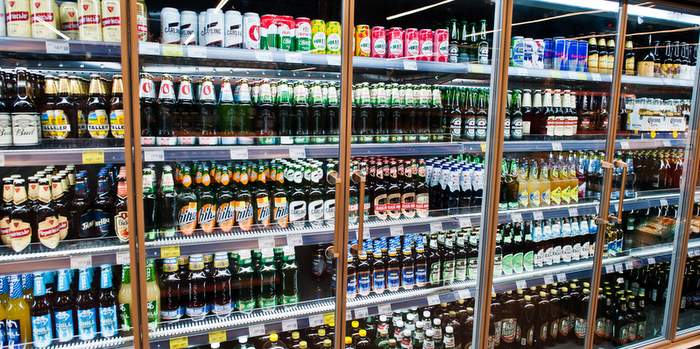
As an evolving industry, beer strives to anticipate what is coming next. Many of today’s industry players emerged in the feel-good, high-growth days of the 2000s and are now entering a mature phase of their corporate life cycle. Fifteen to 20 years ago, the competition was not as fierce — distributor share-of-mind was easier to earn and the consumer was less fickle.
As the market tightens, many seek to read the tea leaves. Where is the industry going, and what adjustments need to be made to allow beer to thrive?
An echo of the American landscape
It seems the beer industry is a microcosm of American culture as a whole: Just as turbulent forces shake up the outlook on social, economic and environmental issues, the forces of change in the world of beer are outpacing the traditional way of doing business.
The well-worn practices no longer serve today’s craft beverage business environment. This is evident in the pressures present at each stage of the value chain — from sourcing materials to pull-through on shelves. Products that used to fit nicely into a few clean boxes — beer, wine and spirits — are now a melting pot of everything, for everyone, all at once.
Defying categories
Until recently, beverage alcohol was a three-headed landscape with each liquid distinctly delineated. As the craft movement took hold, beer drinkers became more sophisticated and demanding. Trends changed rapidly, but categories clearly remained: beer, wine and spirits.
Today, it seems everything under the sun is going into drinks (such as caffeine, cannabis and functional additives) and coming out of drinks (in the case of non-alcoholic beer, wine and spirits). Furthermore, any beverage that has historically been offered in a non-alcoholic context now has a presence in the beverage alcohol landscape: seltzer water, coffee, tea and lemonade.
Simultaneously, occasions are blending. Spirits are now available in ready-to-drink (RTD) cans and show up in traditional beer environments, like the backyard barbeque. On the same note, wine-based cocktails are occasioned the same as beer.
This change in the industry mirrors social forces in the U.S. Our country continues to evolve with a general renouncement of traditional labels. One cannot help but draw the parallels between the evolutions in consumers and the evolutions in consumer packaged goods.
Economic pressures
A change in the industry occurs from without and within. Consumer demands pull producers to evolve in certain ways, while business pressures push them to innovate. Many of the pressures felt in the value chain of beer are also at play throughout the U.S. business landscape.
Scarce natural resources affect brewers’ ability to deliver a reasonably priced quality product. Pain points around access to packaging materials have also shone a light on weak links in the supply chain. The cost to ship finished goods to their destination is on the rise. Fuel is another major pressure and force of change.
As of late, costs have soared, which affects all direct materials. The specific causes of high fuel prices may be short-lived but, even in times of low-cost gasoline, the negative effects of continued dependence on fossil fuels cannot be ignored. It is very expensive — and increasingly less dependable — for producers to ship boxes of cans full of liquid to far-flung destinations.
In 10 years brewers may be putting the onus on the consumer to resolve many of these logistical challenges. Imagine buying a beer packet instead of a can: the consumer takes the beer packet home to mix in their own growler (or other vessel). The consumer is now responsible for sourcing water, CO2, and packaging.
The supplier’s cost of goods has now been reduced dramatically. The price of beer can be lowered while the supplier enjoys increased margins. The lower price encourages consumers to buy more, now that it is a relative bargain.
This shift in product delivery will probably be camouflaged in a message of environmental responsibility. If this comes to pass, it is absolutely true that this would be gentler on the planet, but a large part of the production process will shift to the consumer. This will dramatically affect industries adjacent to breweries: packaging suppliers, freight operators and gas suppliers, to name a few.
A new psychology
The U.S. has outgrown the system on which it was built. The rules and regulations of our forefathers no longer serve the constituents, and the systems seem outdated. As a parallel to the beverage alcohol industry, the three-tier system creates boundaries that are too restrictive for today’s business environment.
The consumer wants things immediately, wants them customized and wants them delivered to their home. Many consumers already use Amazon, Uber Eats or Drizly on a regular basis. It is natural that this consumer preference shift extends to all purchases, but current liquor laws prevent the same market access.
Beverage alcohol is the next great frontier for industry adaptation. Either the regulatory environment will be relaxed and open the direct-to-consumer (DTC) market, or the retail tier will bridge the gap and expand options for DTC sales that are three-tier compliant. A handful of services are meeting this need now, and this service will continue to evolve and mature.
Innovation is inevitable
The beer industry is ripe for innovation. Key pressures are pushing the industry to new territory: external consumer demand for new and different choices, natural resources and supply chain challenges and changing consumer delivery preferences.
With the proliferation of choices, outdated governing structure and changing consumer demand, where will beer be in 10 years? Anyone with a hunch of where the U.S. as a nation will be in 2032 can probably bet on the same themes emerging in beer.
Maria Pearman is the Beverage Practice Leader for GHJ. An expert in the beverage alcohol industry, she has written the books Small Brewery Finance and Distillery Finance.





Leave a Reply
You must be logged in to post a comment.